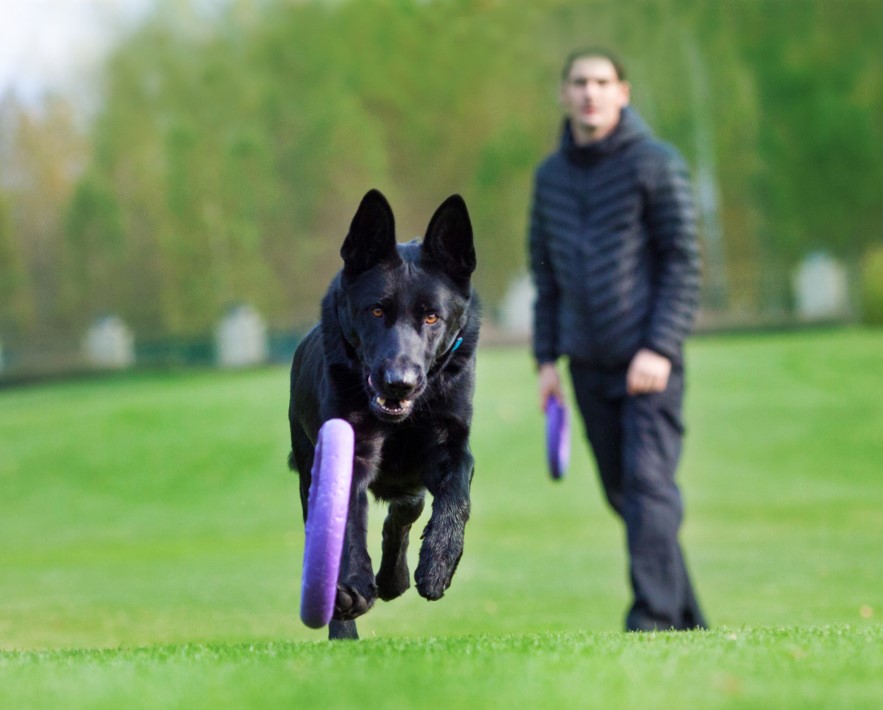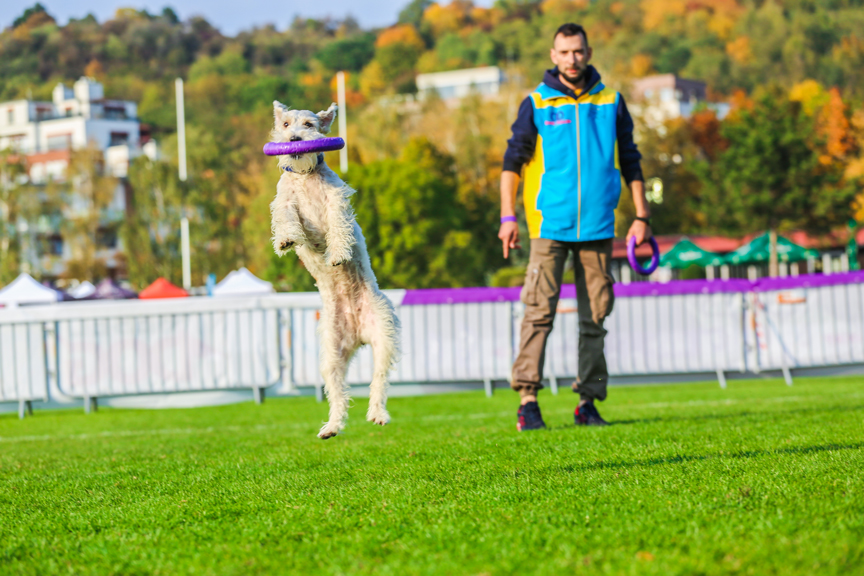- A dog must make the maximum number of jumps with grabbing the Puller with a mouth.
- Jump with grabbing and two paws off the ground – 1 p.
- Jump with grabbing and four paws off the ground – 2 p.
- Jump without grabbing – 0 p.
- Jump without a clear grip – 0 p.
- Vertical jump without marked change left/right sides of the body – 0 p.
- Vertical jump without marked movement of a dog towards the Puller – 0 p.
- Grab without a jump (separation of at least two paws from the ground) – 0 p.
- Handler’s move to / for marking up lines of the performance area 10 x 10 m – 0 p.
- If during the performance the dog grabbed the same Puller ring twice in a row, then the second Puller grip is 0 p.
- If a dog did not grab the Puller ring and it was offered to it again once or repeatedly until it was grabbed with the mouth, then the result of the Puller ring grab is counted according to the rules.
- Non-visible, weak pulling of a Puller by a dog with an incomplete mouth – 0 p.
Each dog, taking into account its breed, age or individual characteristics, may have a different density, strength and style of capture Puller.
Examples of Puller grips that are considered successful:

Scoring in the Puller Jumping discipline, Puppy category
- A dog must make the maximum number of jumps or shifts with grabbing the Puller with mouth.
- Jump with grab and two paws off the ground of – 2 p.
- Puller ring change with a grip – 1 p.
- Jump without a grip – 0 p.
- Puller ring change without a grip – 0 p.
- A grip without a jump (separation of at least two paws from the ground) / without changing the Puller ring – 0 p.
- Handler’s move to / for marking up lines of the performance area 10 x 10 m – 0 p.
- If during the performance a dog grabbed the same Puller ring twice in a row, then the second Puller grip is 0 p.
- If a dog did not grab the Puller ring and it was offered to it again once or repeatedly until it was grabbed with a mouth, then the result of a Puller ring grab is counted according to the rules.
















